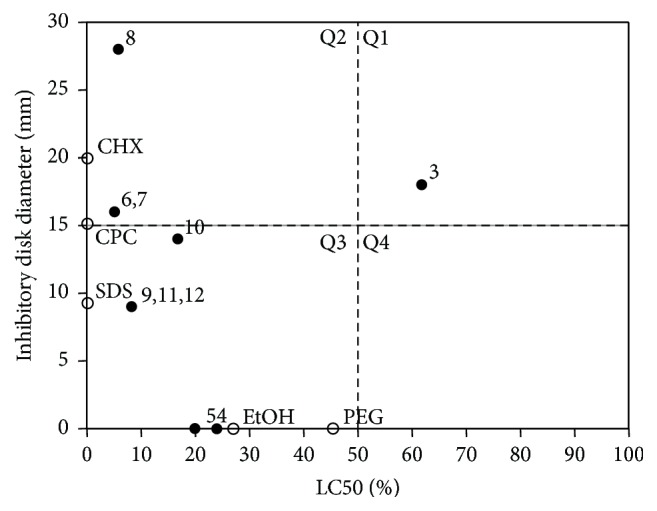Figure 4.

Lethal concentration (LC) 50 for oral fibroblasts and inhibitory zone diameter of a mix of microorganisms exposed to a series of oral rinse dilutions. Gingival fibroblasts cells were cultured overnight and exposed to selected oral rinse dilutions for 2 minutes (Table 1). Cell viability was measured with a formazan formation assay. Statistical analysis was performed, and LC50 was calculated. Additionally, a mix of bacteria, containing Actinomyces naeslundii ATCC 12104, Streptococcus gordonii ATCC 10558, Porphyromonas gingivalis ATCC 33277, Fusobacterium nucleatum ATCC 25586, and Tannerella forsythia ATCC 43037 strains, was cultured and exposed to the undiluted oral rinses, and the inhibitory zone was measured in millimeters after 40 hours. Oral rinse additives served as controls. Quadrant 1 (Q1) indicates good bacterial inhibition combined with low cell toxicity. Q2 shows high bacterial and cell viability inhibition. Q3 contains oral rinses with cytotoxic activity and low antibacterial effectiveness, and Q4 indicates low antibacterial and cytotoxic activity. For oral rinses #1 and #2 and SF (Tables 1 and 3), LC50 was not calculable because cells remained vital and no toxic effects were observed. Black circles indicate oral rinses and empty circles additives. For all experiments, cells with less than 10 passages were used. At least five independent experiments for each cell line were performed.
